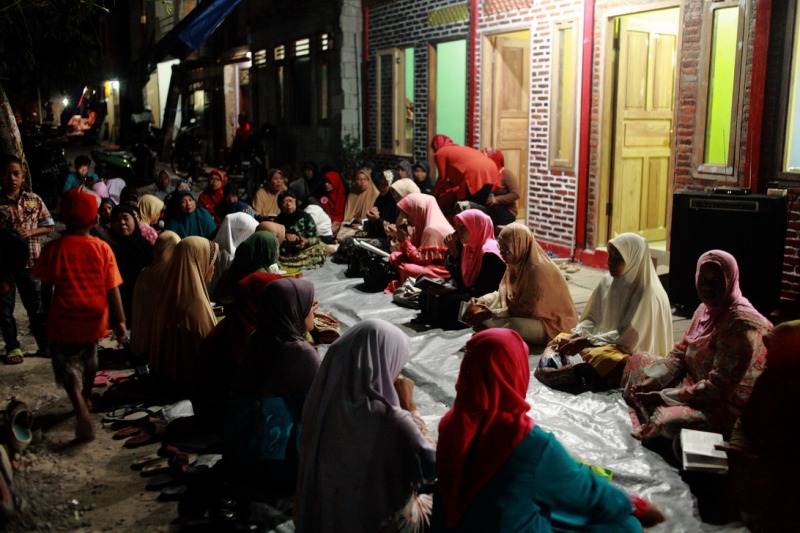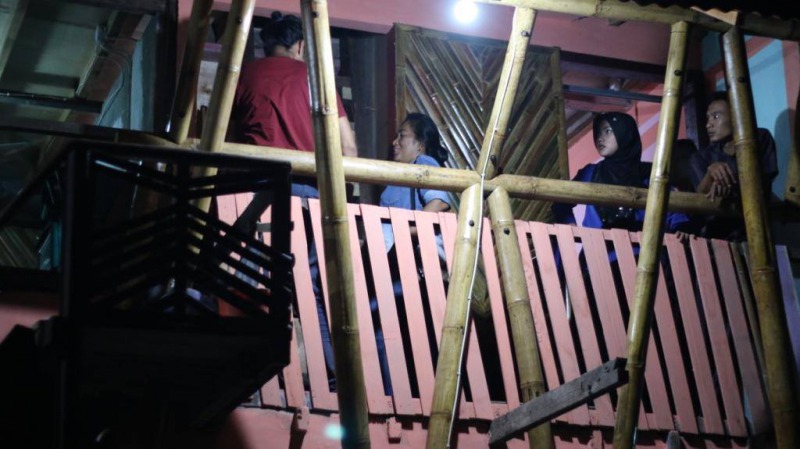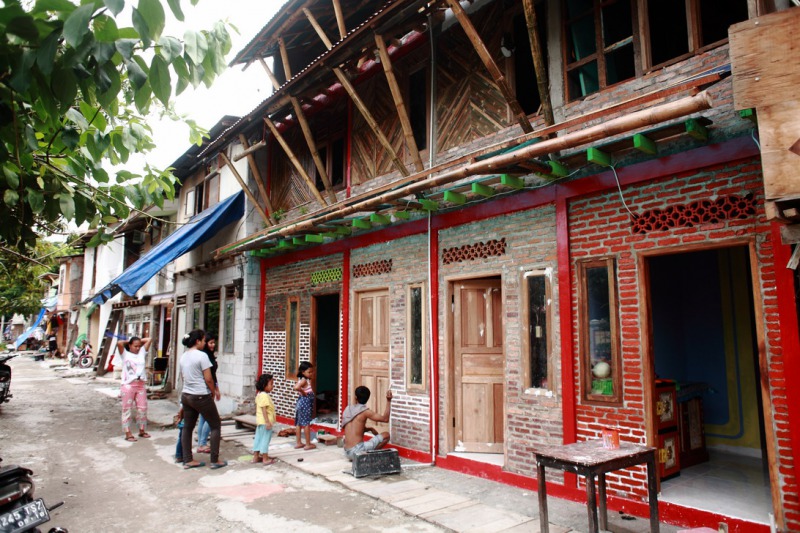image: Architecture Sans Frontières Indonesia |
 some rights reserved
some rights reserved#GC2022 is accepting submissions - 25d 27h 05m 44s
 some rights reserved
some rights reservedThroughout the year of 2015 poor communities in Jakarta were haunted by massive eviction. The ghost come from evictions which take place in several riverside kampungs such as Kunir in May, Kampung Pulo in July, and recently in Bukit Duri. These violent evictions alarm other communities to act immediately. Kampung Krapu and Tongkol in North Jakarta decided to demolish their own houses to give space for five meter wide lanes along the banks. From June to December all kind of structure were voluntarily torn, including a small mosque at Tongkol.
Further, the residents run through a series of public discussions, with attendance of a number of architects and academics. Consensus reached to prepare a vision of kampung self-improvement that involved the upgrading of both houses and public facilities. Seven families in Tongkol volunteered to rebuild their houses from scratch. Six out of seven households decided to share a structure over a shared lot. During October 2015 to January 2016 the six families were able to work together and completed their new three-storey house. The pilot house presents four dwelling units with shared utlities; electricity, water, and sanitation. One bathroom/WC and one kitchen is shared by two units.
Project finance made possible through collective loan available from Urban Poor Consortium (UPC) a renown NGO in Indonesia’s urban poverty sector. A loan amounted equivalent to EUR 10.000 made available for the seven households.
The Indonesian chapter of Architecture Sans Frontieres (ASF-ID) contibuted with design and technical facilitation. Architects of ASF-ID help to prepare the design with drawings and a scale model. The latter were instrumental in communicating bamboo truss design. Bamboo preservation worshop and construction workshop held to ensure practical knowledge transfer.

 some rights reserved
some rights reserved
 some rights reserved
some rights reservedThe main structure of the house is made of reinforced concrete frames. With exception of the front facade, aerated autoclave blocks were used for wall infills. The blocks, locally called hebel, is the new vernacular for poor communities in Jakarta, owing to its quick assembly that requires small amount of mortar. The size is bigger (20 x 7.5 x 7.5cm) and it weighs lower than the traditional red brick. Thus less capacity in load bearing which helps in reducing the size of structural beams.
The usage of bamboos also help in keeping the building light. The roof truss which shelters an attic is made of bamboo Gigantochloa verticillata, or what is locally called andong, available in local market. The bamboos were treated with borax and boric acid solution on site (a technique that has since been transfered to Krapu residents for their own bamboo-building process). This will protect the bamboo from pests and ensure permanent life of structure. Floors in second and third (attic) storey are made of recycled timber from the demolished houses.
PROCESS
The design process began as a series of workshop to understand, due to the limited land availability, what facilities can be shared and what must remain private. By drawing the plan in 1:1 scale on the street, the design was much easier to comprehend.
The construction process was carried out by builders sourced from the neighbourhood. Architects of ASF-ID introduced bamboo construction with bolted joins, which was new to the area and found eager reception. Between 10-15 builders partook in the two-days bamboo workshop, going through the entire process of preservation all the way through erection and assembly.

 some rights reserved
some rights reserved
 some rights reserved
some rights reservedIndonesia is gifted with tropical wet and humid climate. Large openings practically bring interior comfort, but prone to excessive wind and stormy rain. Perforated walls have been among common solutions as evident throughout Indonesia's vernacular architecture, and this is often provided by bamboo weave or bamboo slats. Generous overhangs are essential to protect walls as well as the bamboo/wooden elements.
Distance from car traffic, Tongkol is a quiet neighborhood. Fruit trees lining along the river banks, while the back passage is shaded by mature angsana trees. However, north Jakarta is prone to flooding and care to immediate surroundings is, therefore, a necessity to reduce risks. Regarding this, the community regularly clean the river and organise neighborhood cleaning events.

 some rights reserved
some rights reserved
 some rights reserved
some rights reserved
 some rights reserved
some rights reserved